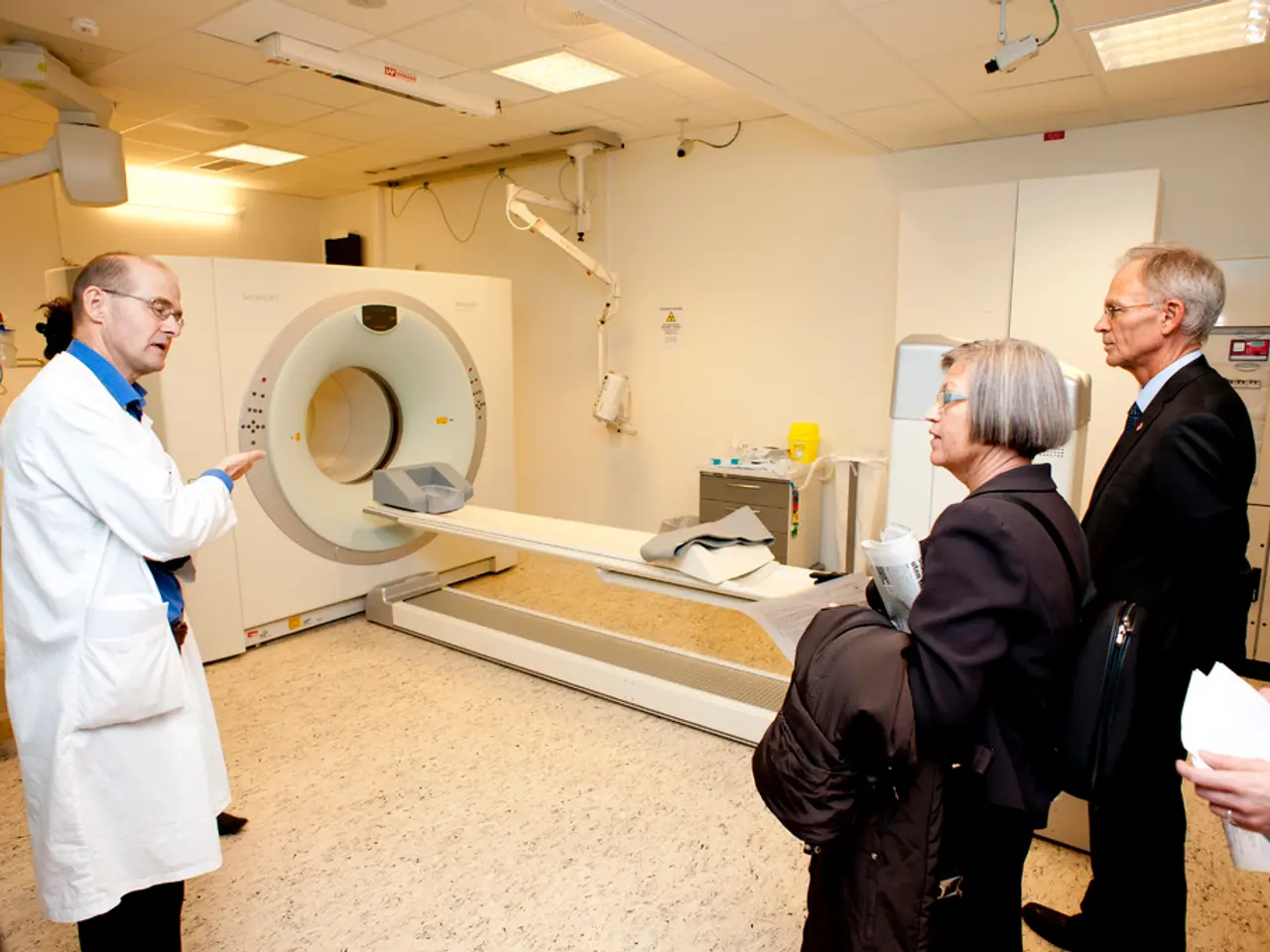Researchers at UCLA granted $2 million to progress MRI-directed radiotherapy for cancer patients, enhancing cancer treatment precision.
In the world of cancer treatment, a significant breakthrough is underway with the emergence of MRI-guided radiotherapy. This advanced form of external beam radiotherapy utilizes magnetic resonance imaging (MRI) to guide radiation delivery, offering numerous benefits over traditional methods.
The MIRAGE trial, for instance, demonstrated a dramatic reduction in side effects of prostate cancer SBRT with MRI-guided radiotherapy versus CT-guided radiotherapy. This is just one example of the potential of MRI-guided radiotherapy, which is making waves in the medical community.
MRI-guided radiotherapy differs from traditional radiotherapy methods by utilizing MRI instead of X-ray-based imaging for guidance. This switch offers superior soft tissue imaging and contrast compared to CT scans, providing a clearer view of the treatment area.
One of the key advantages of MRI-guided radiotherapy is its ability to perform adaptive radiotherapy, a novel form of radiation therapy where a new radiation therapy plan can be generated based on daily variations in anatomy. This adaptability allows for an increase in dose to the intended target and a decrease in dose outside the intended target, potentially improving treatment outcomes while reducing side effects.
The advent of specialty linear accelerators that have integrated MRI-based imaging (MRI-LINACs) has solved the technical limitation of using MRI for radiation guidance. These machines allow for the delivery of intensity-modulated radiotherapy (IMRT) and stereotactic body radiotherapy (SBRT), further enhancing the precision and effectiveness of treatment.
Moreover, the on-board MRI in MRI-guided radiotherapy allows for real-time tracking of targets. This feature, combined with the 'beam hold' function that stops the radiation if the target moves out of position during real-time tracking, ensures a high level of accuracy and safety.
Several clinical studies are currently underway to explore the potential of MRI-guided radiotherapy. The MARS trial, for example, is a study of short-course radiotherapy for abdominopelvic sarcomas. Similarly, the HERA trial is a study of adaptive radiotherapy for post-operative treatment of gynecological malignancies.
In the field of prostate cancer treatment, the MASAMUNE Link trial and the MANTICORE trial are planned randomized trials evaluating adaptive radiotherapy. The HEATWAVE trial is a study of 'triple precision' therapy for intermediate risk prostate cancer, while the results of the SCIMITAR trial showed the benefit of MRI-guided radiotherapy in the context of post-prostatectomy radiation.
UCLA has been a leader in the study of MRI-guided radiotherapy, as they were the leaders for the SMART trial, which evaluated adaptive, dose-escalated SBRT for pancreatic cancer. However, the search results do not provide information about which institute at the University of California, Los Angeles funded these clinical studies.
Lastly, the NOM-Rectal trial is a study of short-course radiotherapy, without surgery, for rectal cancer, further expanding the potential applications of MRI-guided radiotherapy.
As MRI-guided radiotherapy continues to evolve and gain traction, it promises to revolutionize the way we approach cancer treatment, offering more precise, effective, and less invasive options for patients.
Read also:
- Abu Dhabi initiative for comprehensive genetic screening, aiming to diagnose over 800 conditions and enhance the health of future generations in the UAE.
- Elderly shingles: Recognizing symptoms, potential problems, and available treatments
- Exploring the Reasons, Purposes, and Enigmas of Hiccups: Delving into Their Origins, Roles, and Unsolved Aspects
- Various forms of cataracts include nuclear, pediatric, traumatic, and additional types







